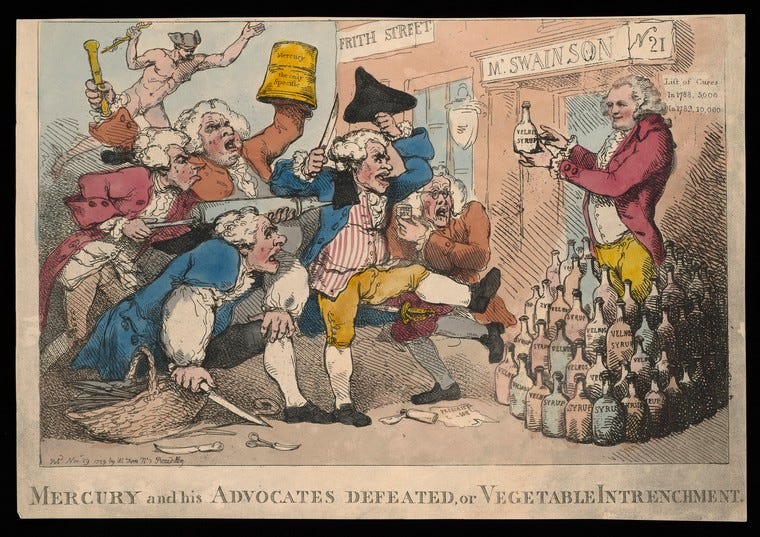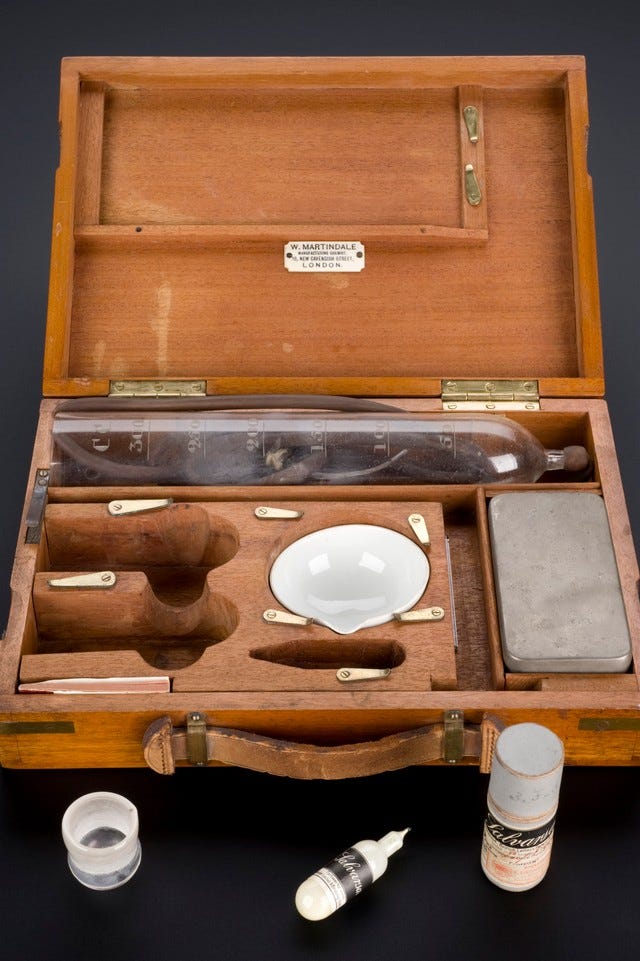Exploring the Return of Historical Medicine: A Reflection
Written on
Chapter 1: The Discovery of Tetracycline
In 1963, anthropologist George Armelagos found himself in an unusual scenario while studying ancient Nubian remains in the Nile Valley of Sudan. As he examined their bones for osteoporosis indicators, he stumbled upon an astonishing finding.
“Imagine unwrapping a mummy only to discover Ray-Ban sunglasses,” Armelagos remarked. Initially, the team thought they had encountered a relic of modern technology.
What they actually uncovered was tetracycline, an antibiotic introduced in 1948. This substance binds to bone and tooth enamel, resulting in a distinct yellow hue, which has even been utilized to ascertain the age of bones.
The puzzle was how the Nubians had acquired knowledge of this antibiotic. Eventually, it was revealed that tetracycline is a natural byproduct of the Streptomyces bacteria, which employs it as a weapon against competing bacteria.
Where is Streptomyces found? In grains, which the Nubians fermented to produce beer. This fermentation process significantly increased tetracycline levels, leading to substantial intake by consumers, including children.

Chapter 2: The Efficacy of Silver
Despite the absence of germ theory, the ancient Nubians recognized the health benefits of their beer. This serendipitous discovery is a common theme in scientific advancement.
While Alexander Fleming is celebrated for his serendipitous revelation of penicillin, it's crucial to remember that he built upon the findings of earlier researchers.
Historically, silver's antimicrobial properties have been acknowledged since ancient times. Herodotus documented that water stored in silver containers remained uncontaminated. This practice persisted into early American pioneer days, where silver coins were placed in liquids like wine and milk to prevent spoilage.
Hippocrates applied silver compounds to wounds for healing, while Paracelsus recognized silver nitrate's ability to eliminate dead tissue and stop bleeding. The trend of using silver grew, leading to the phrase “born with a silver spoon in his mouth.”
However, a side effect of silver usage — a bluish-gray skin discoloration known as argyria — earned those affected the nickname “blue bloods.”
In the 1880s, silver nitrate eye drops were found to prevent the transmission of gonorrhea from mothers to newborns, a practice that continued until antibiotics emerged in the 1940s. Recently, silver's low toxicity and potent antimicrobial properties have rekindled interest within the medical community, especially amid rising antibiotic resistance.
The Cure for a Cure that Was Worse than the Disease (Mark 5:24-34)
Chapter 3: The Dark Side of Mercury
In 1363, a treatment for scabies included mercury, a substance that would dominate medicine for nearly 500 years due to its effectiveness.
Mercury, extracted from cinnabar, was well-known for its hazardous nature. Although it effectively treated ailments, it also came with severe side effects, including excessive salivation and potential neurological damage.
Patients often endured sweat boxes infused with cinnabar fumes, believed to hasten recovery. Unfortunately, ingesting liquid mercury led to chronic poisoning, as it slipped through the digestive system without immediate effects.
Mercury's antiseptic properties contributed to its use in surgical disinfectants, but as safer alternatives emerged, its popularity dwindled.

Chapter 4: The Birth of Chemotherapy
In the early 20th century, Paul Ehrlich embarked on a groundbreaking journey to discover a "magic bullet" to combat syphilis.
Through experiments with industrial dyes, Ehrlich identified that specific bacteria absorbed certain colors. This led him to test various arsenic compounds, ultimately yielding success with compound 606, which he named Salvarsan.
Despite its effectiveness, Salvarsan was unstable and difficult to manufacture, often causing painful side effects and even severe health risks. Nevertheless, it marked the dawn of modern antibiotics.

Chapter 5: Modern Antibiotic Resistance
Today, we hope to never revert to using toxic substances like mercury or arsenic in medicine. However, antibiotic resistance is a pressing issue, with the CDC reporting nearly 3 million Americans facing infections resistant to standard treatments each year.
It's crucial to respond to this challenge, as we may find ourselves revisiting historical remedies in our quest for effective treatments.
AS I MAY - Cure Is Worse Than Disease (Official Music Video)